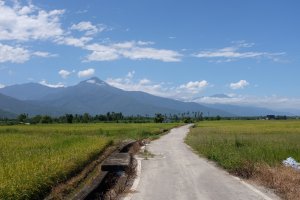Dr. Whei-Li, Lu, Associate Professor, Chinese Culture University
Dr. Stanley Chian, Professor, East Stroudsburg University
Dr. Fredrick Meitner, Assistant Professor, East Stroudsburg University
ABSTRACT
The wine industry growing and contains a mix of global and small local winery producers; due to the demand for wine and high-profit return among agriculture products, the winery industry experiences competition and expansion within different tourism destinations.
Additionally, the Pocono Mountain Region has developed a unique market niche in the last decade and contributes significantly to the region’s economy. However, the winery cluster in our region is not clear due to its early stage of development. Wineries try to reach out to local wine and tourism associations and government sectors. All these tasks are in progress and need to be identified for management.
The current research aims to understand the early stage of the winery cluster by utilizing Porter’s clusters theory, as it has been widely used in empirical research following idiosyncratic results in explaining the winery cluster phenomenon. Kano’s model will be used to assess the attributes of Porter’s cluster theory, such as winery satisfaction, resource needs, and the importance of local government support, and community support which will help in resource allocation.
The anticipated results will be the illustrations of ten Porter’s attributes in the two-dimension Kano diagrams. The analysis will reveal the element of each attribute, whether they are attractive, one-dimensional, must-be, indifferent, or reverse quality. Results can determine the current status of different attributes if they need to ‘keep the good work,’ ‘concentrate here,’ ‘low priority, or ‘over skill’ for further resource allocation.
Keywords: Winery, Pocono area, Porter Cluster Theory, Kano Model
Project Narrative
1.a. Project Significance
Wineries in Pennsylvania have grown rapidly and contribute significantly to the state’s economy. The net income for the 2020 fiscal year has totaled $2.56 billion dollars including liquor and sales taxes which contribute to the state and local government general fund and finance Pennsylvania’s schools, health and human services program, law enforcement, and public safety initiatives (Pennsylvania Liquor Control Board, 2020). In 2020, both Pennsylvania wine production and the number of wineries ranked seventh in the nation. The growth of agritourism is driven by strong demand for family-orientated recreational activities and consumer demand for local food and experiences. Wine tourism, contrastingly, has become one of the major economic drivers for agricultural tourism. The winery and wine tourism industry offers economic growth opportunities to rural communities and fosters community economic development.
Every stage of the community economic development process is associated with some form of local community support (Miyares, 2017). In Northeast Pennsylvania, due to its wet, moisture, and seasonal climate, wineries need to understand the environment and development stage they are in to be successful and competitive (Hira and Swartz, 2014). As more vineyards are established in the Pocono Mountain Region, it is important to understand the status of its cluster development, perceived community support, and satisfaction level amongst local wineries.
- Project Description and Methodology
b.i. Project Goals and Objectives
The present research will provide importance and satisfaction level on winery attributes concerning vineyards and wineries. The analysis of each attribute will offer wineries and local government updates on current winery status and to better prioritize resource allocation to support the growth of the local wine industry.
Furthermore, the three main research questions the research will answer are as follows:
- What are the main attributes that are most important to local vineyards and wineries?
- Does Michael Porter winery cluster theory exist in the Pocono Mountain Region?
- What is the level of relationship between wine cluster attributes?
The goal of the research is to:
Create an environment for students to understand the current and emerging trend portraying the winery cluster in the Pocono Mountain Region and to promote critical thinking and leadership skills by co-developing a continuous line of research proposals, enriching curriculum development, and support the economic growth of the tourism industry in the Poconos.
Specific objectives of this project are to
- Provide students the opportunity to convert theory into practice by applying evidence-based research in the hospitality and tourism industry.
- Distribute and collect Wine Cluster Questionnaires to all wineries in the Pocono Mountain Region, then utilize Importance-Performance Analysis (IPA) to determine which attributes are most important for local vineyards and wineries.
- Contribute new findings to Pocono Mountains Visitors Bureau (PMVB), present findings in our annual International Council on Hospitality, Restaurant and Institution Education (ICHRIE) conference, Hospitality, Recreation and Tourism Management Department Advisory Board, and host round table discussion with local tourism stakeholders.
b.ii. Methodology
In order to achieve the proposed goals and objectives of the project, a detailed descriptions of the project is provided below:
- Provide students the opportunity to convert theory into practice by applying evidence-based research in the hospitality and tourism industry.
I would like to create a research environment for students in the major. especially for HRTM 336 Community Tourism Development and HRTM 213 Wine Appreciation and Wine Management Courses. With the research findings, professors will be able to include Winery Cluster Theory topics into the curriculum for a better understanding of the wine industry in the Pocono Mountain Region.
- Distribute and collect Wine Cluster Questionnaires to all wineries in the Pocono Mountain Region, then utilize Importance-Performance Analysis (IPA) to determine which attributes are most important for local vineyards and wineries.
The research design process of this project is to develop a survey instrument and to guide students through the research process. This will be accomplished through the following tasks:
- a) The attribute items will be developed with Porter’s Cluster Theory. The attributes will be the relationship from variable to variable based on the theory.
- b) There are ten attributes in Porter’s Cluster Theory. These ten attributes will be rated with the two scales, which are developed based on Kano Model, Importance and Performance. Kano’s Performance variable, it refers customer satisfaction with the company’s particular product. This research, it refers to the owners’ and managers’ wineries’ perception of the level of current status toward the particular attribute. Therefore, the importance and current status will be the two dependent variables scaled from 1 to 9.
- c) During the spring semester of 2022, interested students in the course HRTM 336, Community Tourism Development, and HRTM 213 Wine Appreciation and Wine Management will be gathered by the principal investigator and co-investigators. Three workshops prior to the subject interview will be conducted with aiming training and foundations of research design, research methods, APP design and coding, and data collection topics. The fourth workshop will be conducted for data analysis after data is collected.
- d) Students will contact the wineries via emails and phones. A physical visit will be attempted however, an interview on the phone can also be conducted. The data of the survey will be collected in the APP, which is designed in the workshop with students.
- e) Each attribute will be collected as a set of two rates (Importance and Current Status), which will be placed in the diagram of X and Y bars accordingly, with the median rank 5 as the zero point. There will be ten diagrams for the ten attributes.
- f) Analysis of these ten attributes will be based on the Kano model for different elements. Non-linear regression will examine the characters of each of the attributes. A workshop will discuss the analysis and results with all the participating students.
3.b. Project Description and Methodology
The Winery cluster theory was first introduced by Michael Porter in a cluster competitiveness study back in 1998. Since the theory’s inception, research about the wine industry has followed. Some researchers confirmed the theory with spatial patterns of clustering in the regional wineries, but some researchers did not agree with the result (Mueller and Sumner, 2006). With the theory, economists, regional community tourism planners, and government agencies have used this idea for enhancing regional development and agriculture tourism to allocate resources in fostering economic growth.
A cluster is defined as geographic concentrations of interconnected companies and institutions in a particular field (Porter, 1998). In California wine cluster as an example, the supporting suppliers, equipment, barrels, advertising firms, education program, and the assemble of the senate and government form the anatomy structure of a wine cluster (figure 1). Companies’ compatibilities are influenced by the local business environments, such as logistical techniques, well-educated employee, regulations, and taxation. The companies with the same product gradually are clustered under such microeconomic foundations.
During the contact with the wineries in the area for expanding students’ internships, I found that winery tourism has great potential not only for investment return to itself but for students’ careers. This project will involve the local winery association, tourism government, and students’ performing interviews for data gathering.
Figure 1. Anatomy of the California Wine Cluster, Porter 1998, Harvard Business Review.
In resource allocation, identifying the priority of product features, the Importance-Performance Analysis (IPA) is fundamental in management. Kano model is a suite of frameworks of two dimensions, importance, and satisfaction, to examine all the products. The original model was first introduced by Noriaki Kano in 1984 (Mikulic, 2012), and is usually a survey from customers’ viewpoints of product features analyzing the gap between satisfaction and importance. (Figure 2).
Figure 2. Original Kano Model
Kano model offers a clear illustration of how to prioritize the resources for different products that have gained the attention of many marketing practitioners and researchers. The development from data results on spots in the two dimensions frames to regression analysis. The field of study also quickly expanded from physical products to service products. The non-linear results suggest five characteristics of different products: attractive quality, one-dimensional quality, must-be quality, indifferent quality, and reverse quality. (Figure 3). This information helps to identify the key drivers of customers in different products. (Vellkova, Sievitch, & Soulek, 2017).
Figure 3. Kano Model, Application of Kano model to identification of wine festival satisfaction drivers. (Vellkova, Sievitch, & Soulek, 2017)
Porter’s cluster theory is widely recognized, yet not all the following empirical research has confirmed the results. Clustering is a developing process of expanding and strengthening with the interaction of local business resources. Winery in Virginia indicates that between 1971-2015, a trend of clustering development is associated with local support (Miyares, 2017). Every stage of the development might appear as a different phenomenon which is difficult to be agreeable to the cluster theory. The winery in Pennsylvania is an emerging agriculture product. With several surrounding metropolitan cities, government agencies and industry associations are ready to help with more resources.
From Porter’s cluster theory (figure 1), the relationships between suppliers, institutions, government, and tourism sectors to vineyards and wineries are categorized into 10 attributes. Data collection will be employed with APP, distributed via emails to the owners and managers of vineyards and wineries in the Pocono area in Pennsylvania, namely Wayne County, Pike County, Monroe County, and Carbon County. Each subject marks the importance from 1 to 9 of each attribute and how the current status is in their perception, which in the Kano model is deemed as the satisfaction of the customer. Students will design the survey in APP and contact the owners and managers of vineyards and wineries. They will collect data and make a two-dimension diagram for each attribute.
Upon data collected, each attribute will have a two-dimension diagram with Current Status as a horizontal line and Importance as a vertical line. Non-linear regression will be examined for a better fit. The area of such a regression line will illustrate the following quality elements for each attribute: attractive, one-dimensional, must-be, indifferent, and reverse.
Anticipated Results
The set data with two dimensions will be plotted on the chart. Non-linear regression will be performed to draw a curve, and the results will be categorized into the following five characters:
- attractive quality elements: These attributes are not expected by the wineries management team. These attributes provide satisfaction. But when they are not delivered, they do not cause dissatisfaction. However, the increase in performance, the increase in satisfaction. The nonlinear impact could happen as over-proportional satisfaction is results from positive fulfillment.
- One-dimensional quality elements: These attributes appear symmetric impact on satisfaction. The satisfaction reflects according to the performance, increasing and decreasing proportionally.
- Must-be quality elements: These attributes have the character results in dissatisfaction when not fulfilled or not delivered but do not result in satisfaction if the performance level increase. A deficit in these attributes results in an over-proportional decrease in satisfaction (nonlinear impact). This is because customers/wineries take these attributes for granted.
- Indifferent quality elements: Some attributes appear neither as satisfaction nor dissatisfaction, whatever performance is.
- Reverse quality elements: Some attributes appear reversely. Satisfaction when not performing well, dissatisfaction when the job is fulfilled.
Pennsylvania winery industry is just immersing and might not be as fully developed clusters. This result shows not all the attributes reach the fulfilled level of the relationship. Porter’s theory was not confirmed with much empirical research, partially might be a result of the different levels of development of the clusters.
III. Substantiality of Project
This winery cluster research can be conducted in the method of Time Series, Panel Regression. The data gathering can be collected every one or two years until the wineries are fully developed. The special status of Pennsylvania is in the beginning stage; therefore the development of all the attributes in Porter’s Cluster Theory will be a great contribution to the academic field.
Partnering with PMVB
- Student Impact
The students will participate in this project, starting from the workshops. Then they will visit the owners and managers of the wineries for data gathering.
Finally, the research paper will find a conference in a wine country in Europe, where students can decide to go and make a presentation there. Ideally, this project will involve students from the two courses respectively.
V Timeline
Between March and April, the study will consolidate and finalize scale items with executives, recruitment scripts, and informed consent letters for volunteers. Between April and May, students that are interested and are enrolled in HRTM 336 Community Tourism Development and HRTM 213 Wine Appreciation and Wine Management will be selected.
Data collection will begin from May to July. During August and September, the project will conclude, and data analysis will be completed. From November to the following April, results and conclusions would be finalized and reported. The proposed timeline is as follows (Table 1):
Table 1. Timeline
Jan 2022 Workshop
February – April 2022 Winery visits
Questionnaire distribution and collection
May 2022 Analysis of Data
May-Jun 2022 Submission abstract to conference
July 2022 Presenting at ICHRIE Conference
August 2022 Publishing Article
1) Principal investigator duties: scale development, recruitment script preparation, train members of the research team, coordinating with managers in the PMR, data analysis, concluding the final.
2) Co-investigator duties: data analysis, conducting meetings with students, train members of the research team.
3) Student duties: driving to tourism destinations to distribute surveys, interview visitors, and collect the end results of the surveys. Students will also be responsible for importing, editing, and tabulating the data. A workshop will be conducted for further analysis in plotting attributes into the diagram, non-leaner regression, and explanation with the insights of the wineries industry.
References
Hira, A. & Swartz, T. (2014). What makes Napa Napa? The roots of success in the wine industry. Wine Economics and Policy, 3, 37-53.
Mikulic, J. M. (2012). The Kano Model-A review of its application in marketing research from 1984 to 2006). Economy Transdisciplinarity Cognition. 1-10.
Miyares, M. (2017). Do grape growers cluster? A study of Virginia winery locations between1971-2015. Journal of Mason Graduate Research, 4(1), 1-15.
Mueller, R.A.E., & Sumner, D.A. (2006). Cluster of grapes and wine. Third International Wine Business Research Conference. 1-18.
Pennsylvania Liquor Control Board. (2020). 2019-2020 Pennsylvania Liquor Control Board Annual Report. Retrieved from https://www.lcb.pa.gov/About-Us/News-and-Reports/Documents/PLCBFY2019-2020AnnualReport.pdf
Porter, M. (1998). Clusters and the new economics of competition. Harvard Business Review, November-December.
Vellkova, N., Sievitch, V., & Soulek, K. M. (2017). Application of Kano Model to identification of wine festival satisfaction drivers. International Journal of Contemporary Hospitality Management, 29(10).
Managing Editor: Chih-Hsuan Tsao 曹芷瑄





